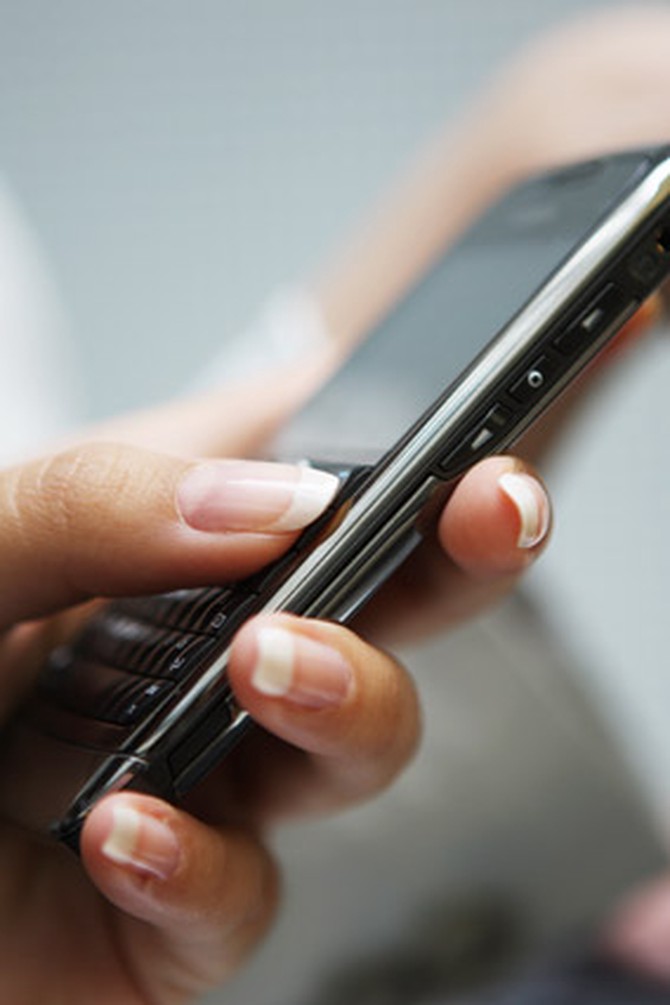5 Ways You Think You're Saving Money But Aren't
Avoiding these common mistakes can give that dollar in your pocket a little more company.
By Candace Braun Davison

Photo: Thinkstock
You're Not Buying a Shiny New Phone
Whether you buy it now or you buy it later, getting a new phone means paying for it. But keeping your current phone after your two-year agreement is up means you might be making payments on it long after you've covered the full price of it. Many service agreements charge a subsidized rate for a phone upfront—about $200—plus a monthly payment fee that's included in your bill. When the 24 months are up, that fee remains part of your monthly statement, explains Consumer Reports. Until recently, you haven't had many other options. But, as of March 2013, T-Mobile allows you to use your current phone on a lower-rate, "no contract" month-to-month plan. Unlimited minutes, text messages and 2GB of high-speed data costs $60 per month. A comparable two-year contract plan elsewhere can cost $100 a month, which means that sticking with your current phone—and staying in a contract—could cost you up to $40 more per month.
If you really want a new phone, CNET found that opting for a no-contract plan and buying the phone at full price may still be cheaper than getting the same phone at a subsidized rate with a two-year agreement. An iPhone 5 and two years' service costs $2,020 at T-Mobile, but it can cost $2,600 elsewhere, the site reports.

Photo: Thinkstock
You're Buying in Bulk
It seems like a good idea: Get more of what you use for less. But bulk buying is one of six leading causes of food waste, which can cost a family of four an estimated $1,350 to $2,275 each year, reports the Natural Resources Defense Council. When it comes to items without an expiration date, the problem often isn't using too little—it's blowing through too much, too fast: Turns out 53 percent of people don't use the recommended dose of laundry detergent—guessing or filling the cap to the top—found a 2010 study by Method Products, Inc. Some caps have fill lines halfway, some are two-thirds, but it's almost never near the top, says Merany Eldridge, spokeswoman for Method. (To combat this, Method's detergents use a pump nozzle for a more precise measurement, and an increasing number of companies offer single-serving tablets, like Tide Pods.)

Photo: Thinkstock
You Refuse to Be Upsold at an Oil Change
Maybe you have a story like this: A friend brought her car in for a $30 oil change and wound up paying $3,000 for unrelated "urgent" repairs that turned out not to be so urgent. Still, the top things a mechanic might suggest are fluid changes, tire rotations and new brake pads—which you may genuinely need, says Austin Davis, author of What Your Car Mechanic Doesn't Want You to Know and founder of MyHonestMechanic.com. By letting the mechanic, who's already got a good look at your engine, check out key areas, you can save yourself an extra trip to a dealer or a surprise problem on your next road trip. Davis recommends keeping these facts in mind: Transmission fluid should be changed every 50,000 miles, the power steering fluid once in the car's lifetime (roughly 100,000 miles), and your tires should be rotated every 9,000-10,000 miles. "The front brakes need to be replaced about twice as often as the back ones, because that's where the stopping power is," he explains. If a mechanic urges you to change them, ask how thick the brake pad is compared to its metal backing—if the pad is thinner than the backing, it's time to replace them.

Photo: Thinkstock
You Turned Down the Warranty
Warranties don't always make sense—like paying $3 for a two-year service plan on DVDs that cost $5, something we recently came across—but for expensive items you don't have the funds to replace, the extra reassurance could be worth it, says Manisha Thakor, CEO of MoneyZen Wealth Management LLC. About one in five people will have their iPad damaged within the first two years of ownership, reports SquareTrade, which sells two-year warranties for $99. (In our experience, frequent travelers and those who are a little on the klutzy side are well represented in this group.) Like many companies, Apple's standard warranty doesn't cover accidental damage, so any cracked screens, scratches or broken ports are up to you to replace. But the company does offer AppleCare+, which will cover up to two "oops" moments for $99 for two years, plus a possible $49 service fee. Wal-Mart also offers a two-year accident-protection plan for $69 for tablets that cost $500-$700.

Photo: Thinkstock
You Bought a Pass to Save on Tolls
Getting an electronic tolls pass—such as an E-ZPass or SunPass—to use with your rental car can save you a few dollars on select tolls compared to paying with cash (up to $4.75 when crossing the George Washington Bridge or Lincoln Tunnel in New York), but if you're not hitting the tolls every day you rent the car, it may not be worth it. Some car rental companies charge up to $5 per day for use of the pass—even on days when you never pass a toll plaza. Plus, some advertised discounts come with restrictions. For example, you can cross the Golden Gate Bridge into San Francisco for half price with a FasTrak pass, but to get the full 50 percent off, you must have three or more people in the car and be crossing during weekday rush hour. Otherwise, using FasTrak shaves $1 off the $6 toll. USA Today offers a roundup of many of the major rental car companies' policies so you can check yours at a glance before booking.
Next: 10 ways to get more money—without asking for a raise
Next: 10 ways to get more money—without asking for a raise
Published 06/18/2013

